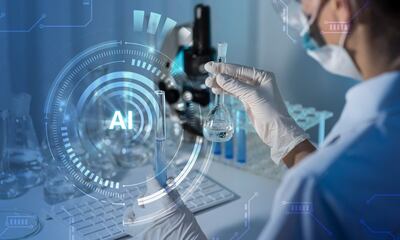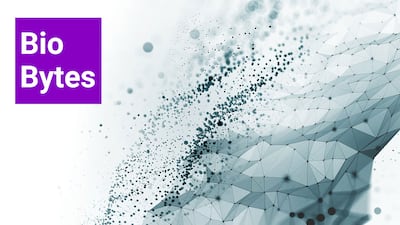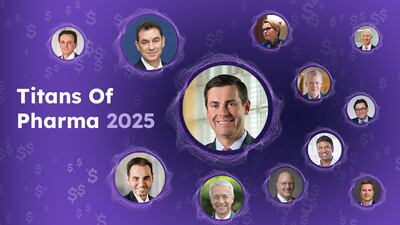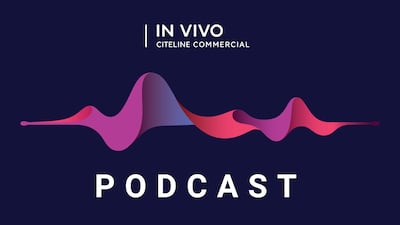Patent filings for computing applications in life sciences outpaced growth in general patent filings between 2017 and 2021. The largest number of these filings is in the health care field (over 75%), followed by the areas of bioinformatics and computational chemistry.
Authors
Lauren Gregory is a senior associate and patent attorney, Marek Blaszyk is a technical assistant, Sophie Skidmore is a technical assistant, all with law firm CMS.
Special thanks to Rachel Free, also of CMS, for additional remarks
China is the largest global contributor of ICT in life sciences patent filings, followed by the US. The majority of Chinese applicants with the highest number of filings were universities, in contrast to the US where industry dominated this patenting space.
Surprisingly, the growth in the number of filings attributable to AI (and machine learning) is not as large as perhaps might have been expected in view of the significant investment, development and hype surrounding AI in recent years. Nor does AI appear to be the main driver of growth in either bioinformatics or computational chemistry in the time window studied. It may be that it is too early for the real growth in AI life science technology to be reflected in the available patent data, or that applicants are keeping the AI technology as a trade secret.
Computing In Life Sciences: Surging Ahead in Growth In Patent Filings
Compared to patent filings across all technology areas (according to data from the top 20 patent filing offices), life sciences-applied ICT patent filings experienced rapid growth between 2017 and 2021, averaging 20% growth year-on-year from 2017 to 2020, but slowing to 3% in 2021. This growth far outpaced the growth seen in the total number of filings in the same period (see Exhibit 1). Overall, this reflects the significant investment in ICT in life sciences as well as the developments in the practical application of this technology in this field.

Patent filings for computing applications in life sciences have seen rapid growth in recent years, outpacing growth seen in general patent filings between 2017 and 2021.
The Pulse of Progress: Health Care Leads Filings In Computing In Life Sciences
To take a deeper look at the areas driving the growth in ICT in life sciences, the numbers of worldwide ICT patent filings in the fields of bioinformatics, computational chemistry and health care were assessed. Data categorised by IPC codes G16B, G16C and G16H were considered representative of ICT patent filings in these fields (see Exhibit 2).
When the ICT filing data are broken down by field, it becomes apparent that health care accounted for the vast majority of ICT filings in life sciences (see Exhibit 3), followed by bioinformatics and computational chemistry. This is perhaps unsurprising as this field has enormous breadth, ranging from diagnostic and prognostic methods to IT systems for handling patient data, image processing and epidemiological data.
Between 2019 and 2022 bioinformatics was the more active area for ICT filings than computational chemistry. However, the percentage growth in the number of filings in bioinformatics is smaller than the corresponding growth in the number of filings in computational chemistry in that same period, such that the total number of filings in computational chemistry looks set to overtake those in bioinformatics for the first time in 2023 (although it remains to be seen what the final filing data will be as data for 2022 and 2023 are incomplete because of the 18-month delay between patent filing and publication).
Perhaps the differences in the growth of filings in bioinformatics and computational chemistry reflects in part the differences in the complexity of biological systems versus chemical ones. For example, the use of ICT, including AI for small molecule design has been around for much longer than e.g. de novo design of antibodies, first reported in 2024.
The largest number of filings in ICT in life sciences are in the healthcare field, followed by bioinformatics and computational chemistry.
China Leads the Way
China is the largest global contributor of overall patent filings in the world, contributing 2.3-fold more filings than the USA (see Exhibit 4).
This is also the case in the field of ICT applied to life sciences from 2014-2023, where China leads the way, followed by the USA. China also remains the top filing country when the ICT in life sciences filing data are further split into ICT filings in bioinformatics, computational chemistry and health care (see Exhibit 5).
Interestingly, the US’s contribution to the number of filings in the ICT in life sciences field is similar to its contribution in the total number of patent filings (22% vs 19% respectively) and remains similar for ICT filings in the bioinformatics and health care fields (22% and 26% respectively). In contrast, the US’s contribution in the computational chemistry field is significantly smaller (9%) with China’s filings in this field (67%) outnumbering those from the US by over 7-fold. It is worth noting that applications can be categorized under multiple IPC codes therefore, some applications may have been duplicated in the bioinformatics, computational chemistry and health care fields. This overlap may account for the increase in the total number of applications classed under bioinformatics, computational chemistry and healthcare, as compared to the total number of ICT in life science applications.

China’s overall dominance in patent filings is perhaps unsurprising, given its status as the world’s most populous country up until 2023 and that it provides multiple non-market driven incentives for filings.
However, given that the US is the largest pharmaceutical market in the world, China’s dominance in the ICT in life sciences field might be less expected. Nevertheless, it appears that being the largest market does not compensate for China’s size and patenting incentives. China also dominates the chemical industry market as compared to the US (43% vs 11% market share in 2021), which likely plays a role in the vast difference seen in computational chemistry ICT filings.
Looking at the top 50 assignees for patent filings for ICT in life sciences, 19 are American, 15 are Chinese, 9 are Japanese and 2 are German. There is also 1 entity per country for France, Hong Kong, Korea, Netherlands and Switzerland. Interestingly, out of the 15 Chinese entities, 10 are universities, whereas for the US only a single university (University of California) appears on the list.
Perhaps China’s dominance in the number of filings in this field results from non-market driven incentives provided in China for filing patent applications (such as requirements for research grants), such that this sector is flooded by filings from academic institutions. In contrast, the US’s contribution appears to arise mainly from industry. It would be interesting to see whether the subject-matter of these filings reflects this difference. Either way, the sheer volume of filings shows the significant investment in ICT in life sciences in these countries making them market leaders.
China is the largest global contributor of ICT in life sciences patent filings followed by the US. The majority of Chinese applicants with the highest number of filings were universities, in contrast to the US where industry dominated this patenting space.
Is The ‘AI-volution’ In Life Science Patents Over-Hyped?
To obtain an understanding of the contribution of AI in bioinformatics and computational chemistry, filings relating to machine learning in these categories were analysed. Data categorized by IPC codes G16B 40/20, G16B 40/30 and G16 C20/70 were considered to provide an indication of the impact of AI in bioinformatics and computational chemistry (see Exhibit 6). Due to the apparent lack of an equivalent IPC machine learning code for health care, the impact of AI in health care was not analysed.
AI In Bioinformatics
The number of AI filings in the bioinformatics field grew between 2019-2022, with the highest year-on-year growth (36%) seen in 2020 (for available data). However, the year-on-year growth of this sub-field appears to have subsequently slowed with 5% growth in 2021, and so far 8% growth in 2022 and 16% fewer filings seen in 2023 (although these figures are subject to increase once the complete data for these years are available).
AI as a proportion of the bioinformatics field has also grown, accounting for 20% of all ICT bioinformatics filings in 2019 to (currently) 32% of filings in 2023.
Overall, the AI in bioinformatics field has experienced growth between 2019 and 2022 (1.5-fold increase) and outpaced the growth in the overall bioinformatics field (1.1-fold increase), indicating an increased contribution of AI to the bioinformatics field.
AI In Computational Chemistry
While a smaller field than bioinformatics, computational chemistry has experienced larger growth in the number of filings over the last years. This growth was also seen in the number of filings in the field of AI in computational chemistry.
The number of AI filings in the computational chemistry field grew between 2019-2023, with 52% and 21% year-to-year growth with respect to the number of filings in 2020 and 2021. The data for 2022 and 2023 so far show 14% and 19% growth to date, suggesting the filings have continued to grow, albeit at a slower pace, in contrast to the more static growth seen in the AI in bioinformatics subgroup.
Moreover, in line with the general growth in the computational chemistry field (which looks set to overtake bioinformatics for the first time in 2023, year-to-year growth in AI filings is higher for computational chemistry than bioinformatics. In fact, for the first time, the number of filings in AI in computational chemistry in 2023 are currently almost equal to those in AI in bioinformatics. Again, this suggests that the computational chemistry field, and specifically the subgroup of AI within this field, may be a more active area of development than AI in bioinformatics.
It is interesting to speculate whether patent office requirements in Europe whereby a patent claim has to be limited to a technical purpose has an impact on the data. Finding a technical purpose in computational chemistry may well be easier than in bioinformatics.
However, unlike AI as a proportion of the bioinformatics field, AI as a proportion of the computational chemistry field grew from 26% of all computational chemistry in 2019 to about 30% in 2020 and has remained approximately at that level since. Compared to the average year-to-year growth in the field of computational chemistry, the growth in this field indicative of AI cannot be seen as the sole driver of overall computational chemistry filings.
Despite the buzz about AI in recent years, AI-related technology does not appear to be the main driver of growth in either the field of bioinformatics or computational chemistry.
Distribution Of Filings
In terms of the distribution of filings reflective of AI in bioinformatics and in computational chemistry across different geographical regions, the earlier-demonstrated patterns for the broader fields of bioinformatics and computational chemistry were reflected (see Exhibit 7), with China leading the way in the number of filings.

The Future Facing AI In Life Sciences
It is surprising that AI-related patent filings in life sciences have not (yet) experienced the levels of growth one might possibly have expected in view of the significant interest and investment in this technology. Despite the buzz about AI in recent years, AI-related technology does not appear to be the main driver of growth in either the field of bioinformatics or computational chemistry.
It might well be the case that real growth in this technology is still too new to be reflected in the current patent data given the 18-month delay between patent filing and publication, and that there will be a much larger number of filings in the near future.
A second factor is that applicants may not prioritise AI applications given the pace of development, and the relative difficulty in identifying infringement as compared to, for example, more straightforward physical products or even manufacturing methods.
Third, applicants may opt to seek patent protection only for the product developed with the use of AI. It is not uncommon for AI algorithms to be kept as trade secrets by clients.
Fourth, it could be that AI has yet to translate to a significant range of patent-worthy or patent eligible uses. It will be interesting to see what changes the next years will bring.
Finally, it is possible that there will be a shift in strategy concerning AI-related patent filings in the life science space with the advent of the USPTO guidance on AI assisted inventions that was released in February this year. Generally speaking, the USPTO guidance means that where an invention is created with the assistance of an AI tool, US patent protection is only available if a human inventor made a significant contribution to the invention. At this point it is not clear whether other jurisdictions will have similar guidance, especially since the criteria for inventorship differ between jurisdictions. At least the USPTO guidance appears to mean that US patent protection is unavailable for outputs from AI tools where there is no significant contribution from a human inventor. In contrast, if the AI tool itself is created by a human it would be potentially available for patent protection assuming it is new, inventive and meets other criteria for patent protection.
Methodology
Data on the overall number of patent applications filed between 2014 and 2023 were acquired from WIPO IP Statistics Data Centre. All other data were acquired from PatSeer. The search was conducted in February 2024, limiting the filing period to 01/01/2014 to 31/12/2023.
The complete filing data for 2022 and 2023 are not yet available due to the 18-month delay between the filing and publication of the patent application.
The IPC codes were used to filter the search results by providing the following search term: IPC: G06F19* OR G16C* OR G16B* OR G16H* OR G16Z*.
Assumptions
We assume G16B is a code indicative of filings in bioinformatics in general, with G16B 40/00 (or G16B 40*) related to a narrow field of bioinformatics applications including biostatistics, machine learning and data mining, based on the code definition provided by WIPO. Similarly, code G16C is assumed to be indicative of computational chemistry, with G16C 20/70 indicative of the patent filings related to a narrower area of machine learning, data mining and chemometrics. Although the IPC publication does not explicitly provide for categorization of AI methods in bioinformatics and computational chemistry, we assume that the codes containing machine learning methods might be considered reflective of the developments in the field of AI. We assume that G16B 40/00 and G16C 20/70 are equivalents of each other in bioinformatics and computational chemistry. We also assume that codes G16B 40/20 and G16B 40/30 (supervised and unsupervised data analysis respectively) are reflective of supervised and unsupervised machine learning filings in the field of bioinformatics.
We assume that G16H is indicative of the ICT applications in healthcare. For G16H, the ICT subgroups were not analysed due to a lack of a code which would appear to be equivalent to G16B 40/00 or G16C 20/70 and indicative to some extent of the filings where machine learning was the subject of the application.
To obtain the data on the applied ICT filings in life sciences before 2019, we assume that filings which are now classified under G16B, G16C, G16H or G16Z would have previously been categorized under G06F 19/00, which we base on the IPC publication Revision Concordance List.








